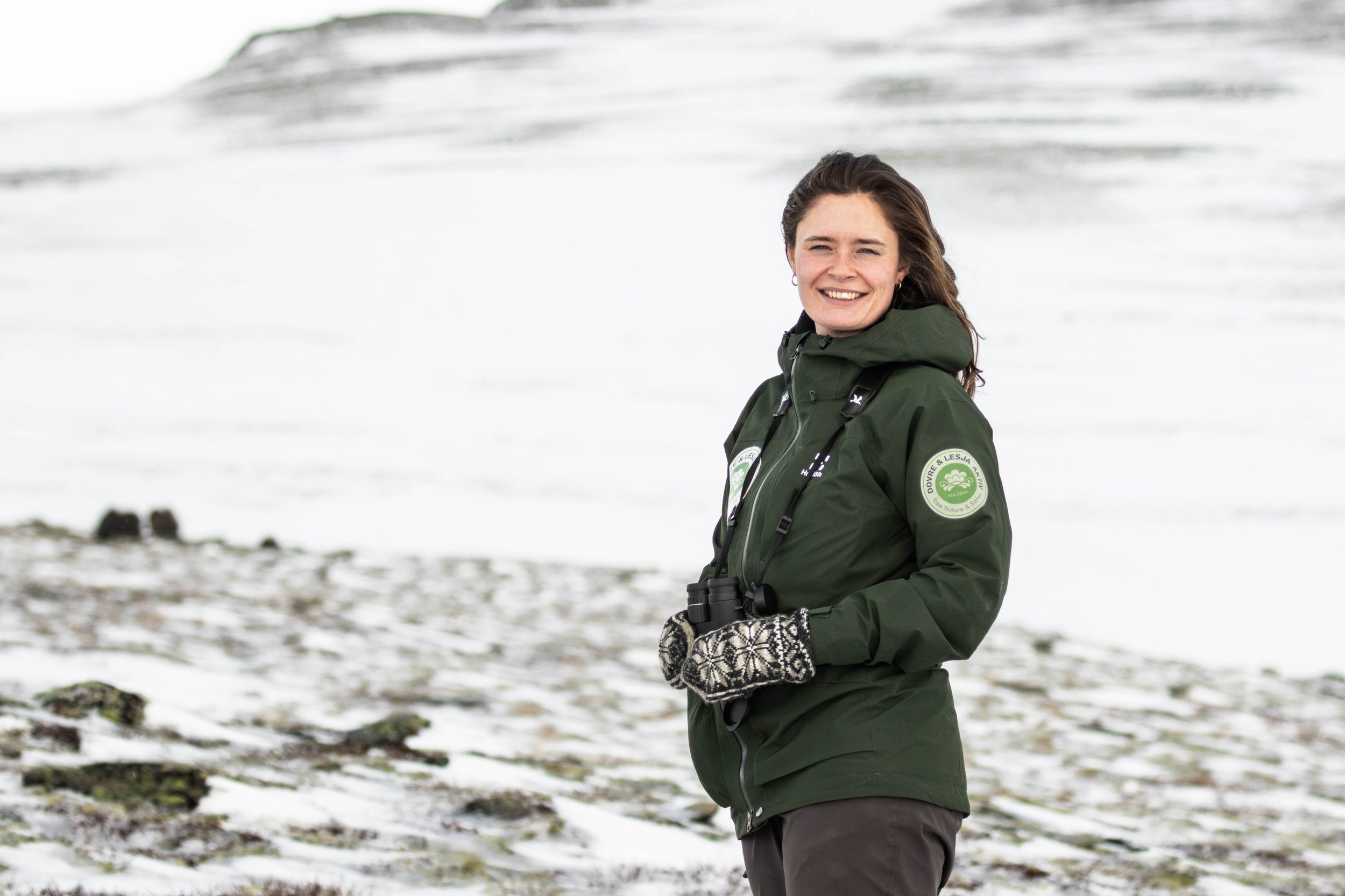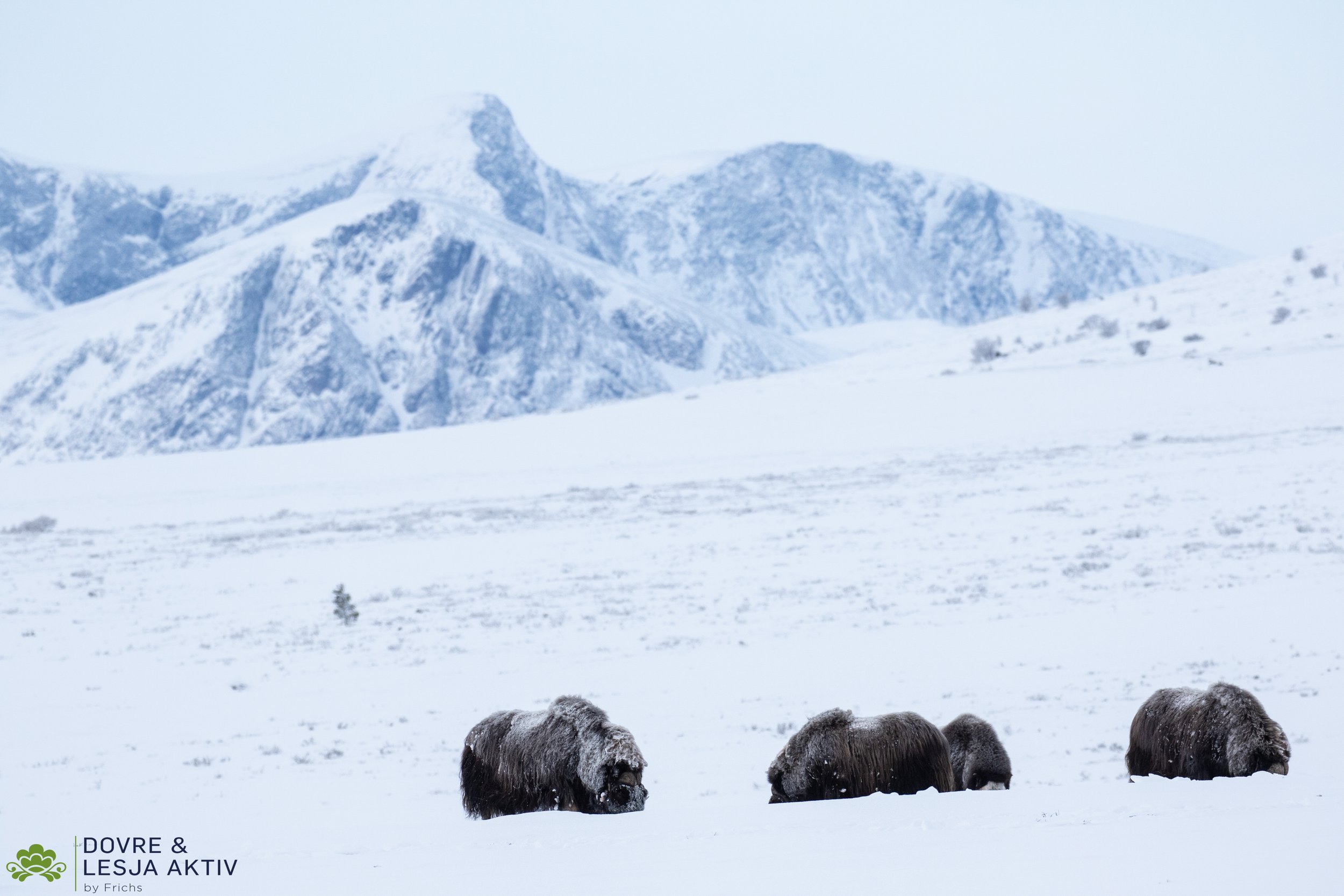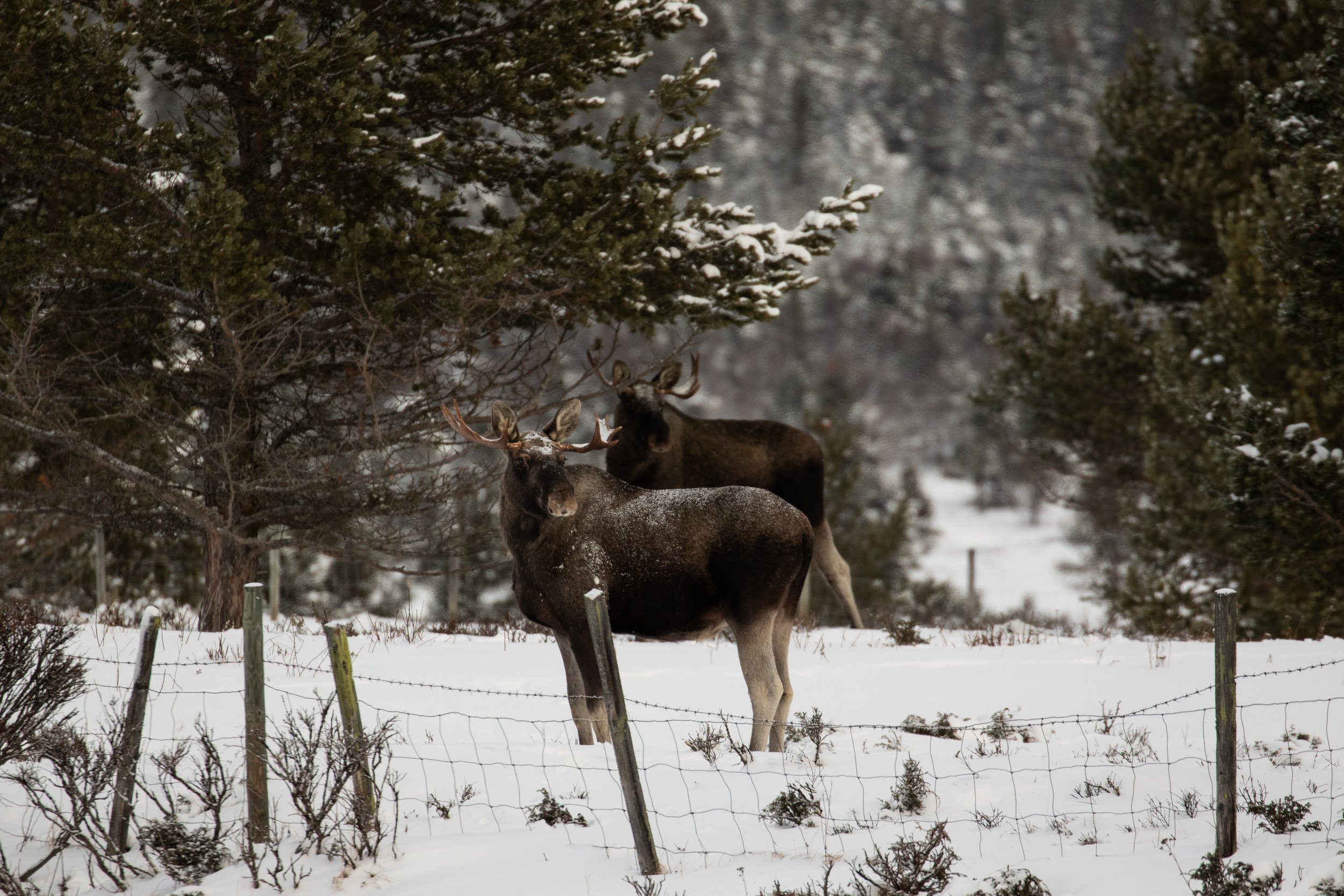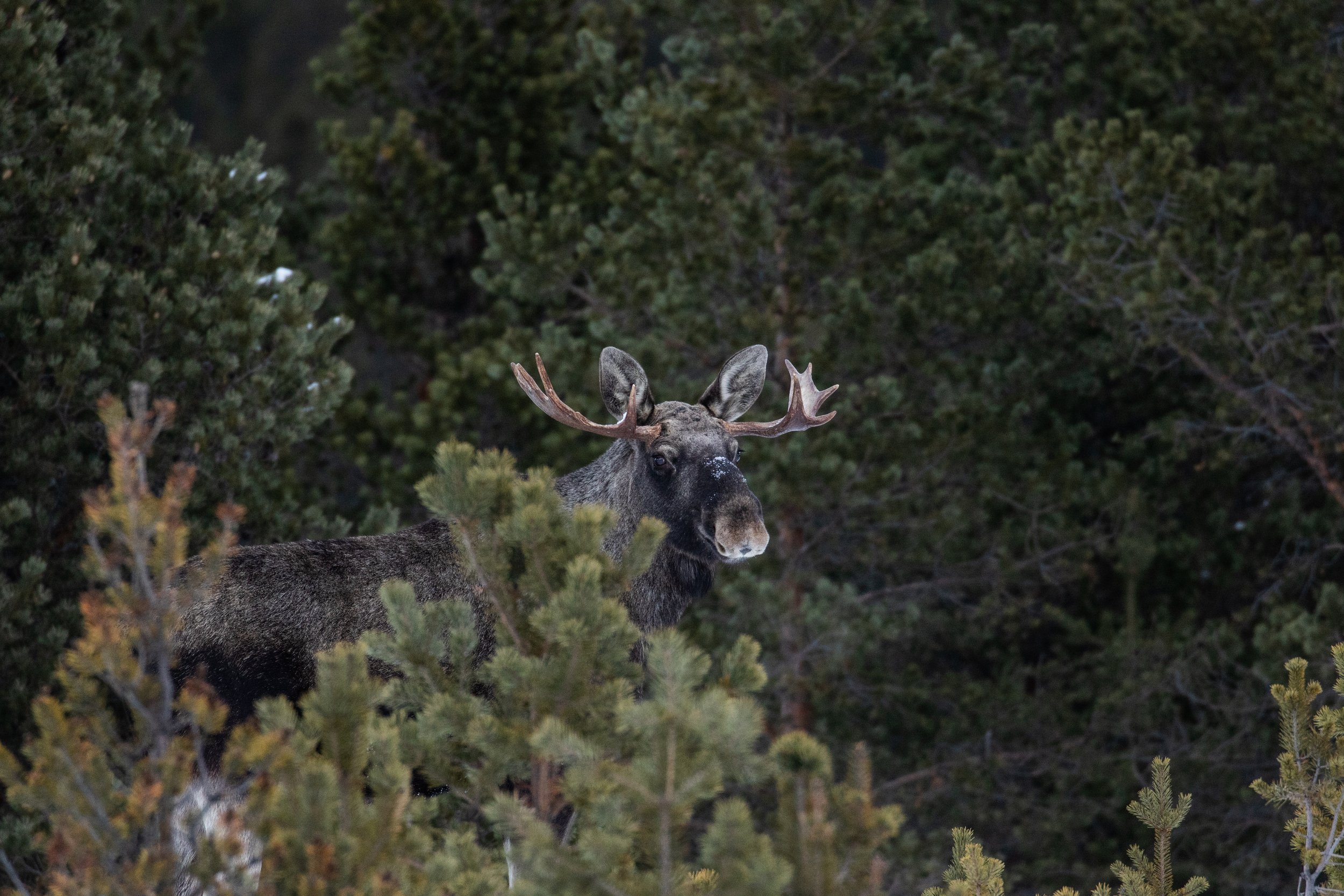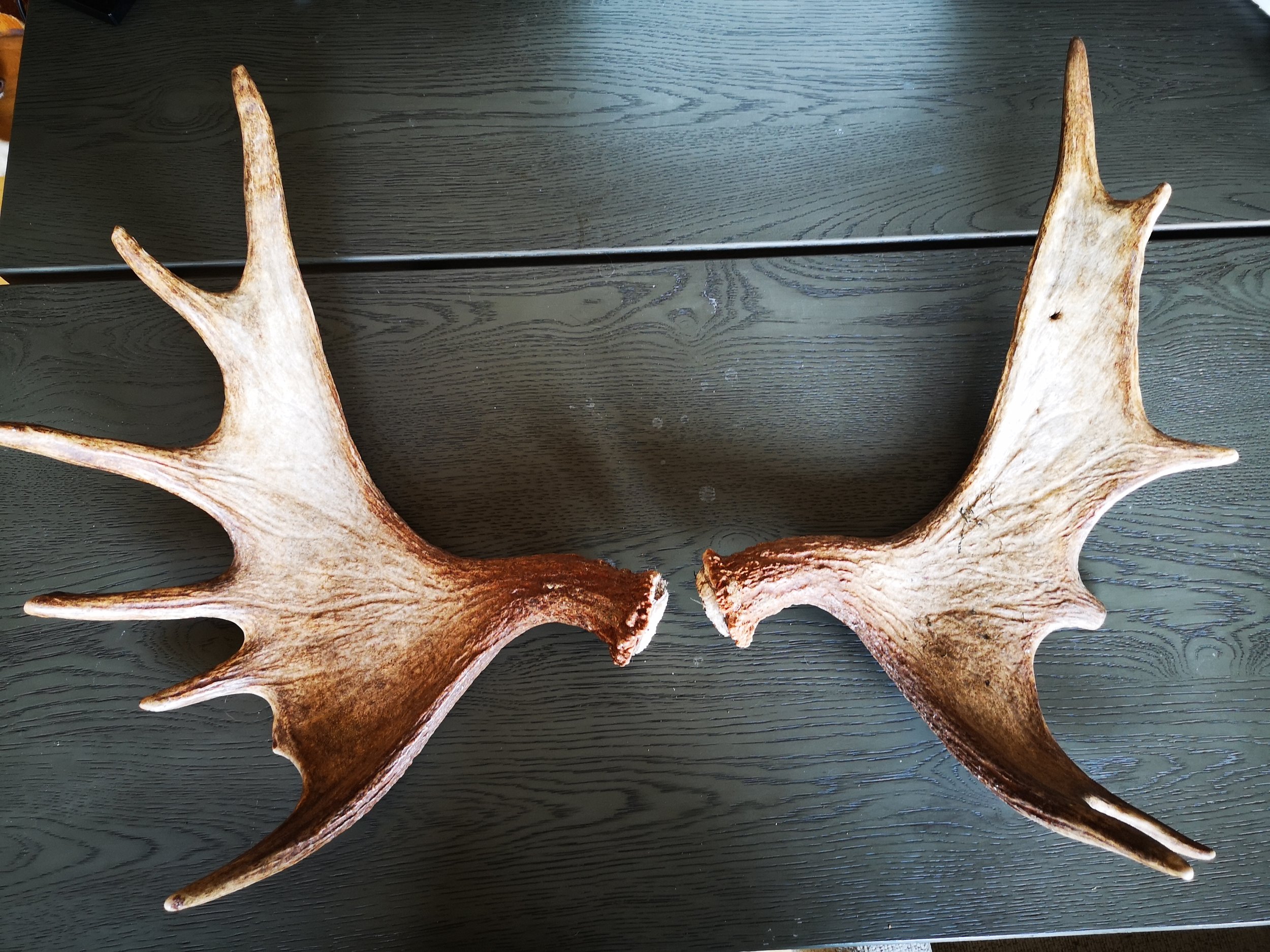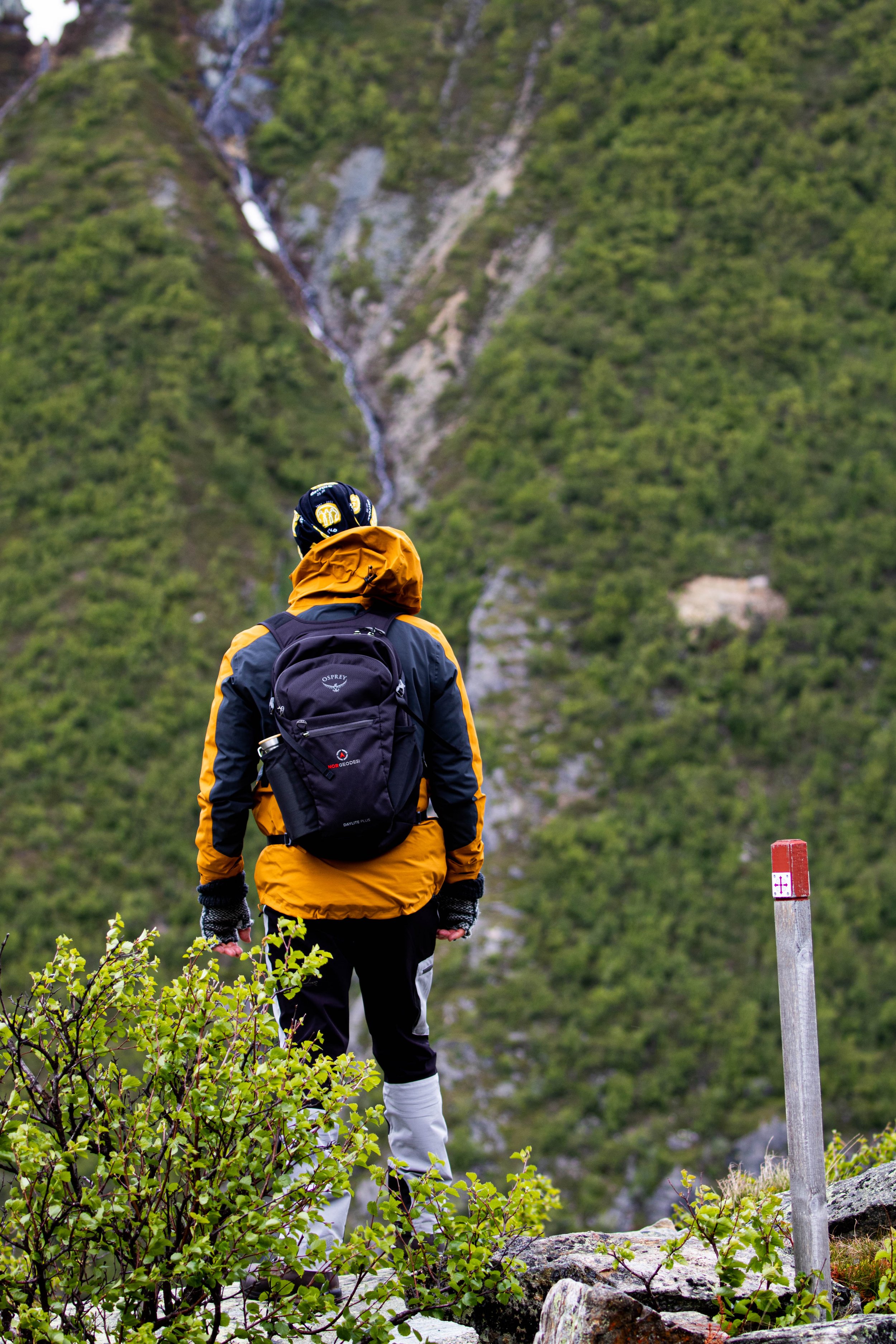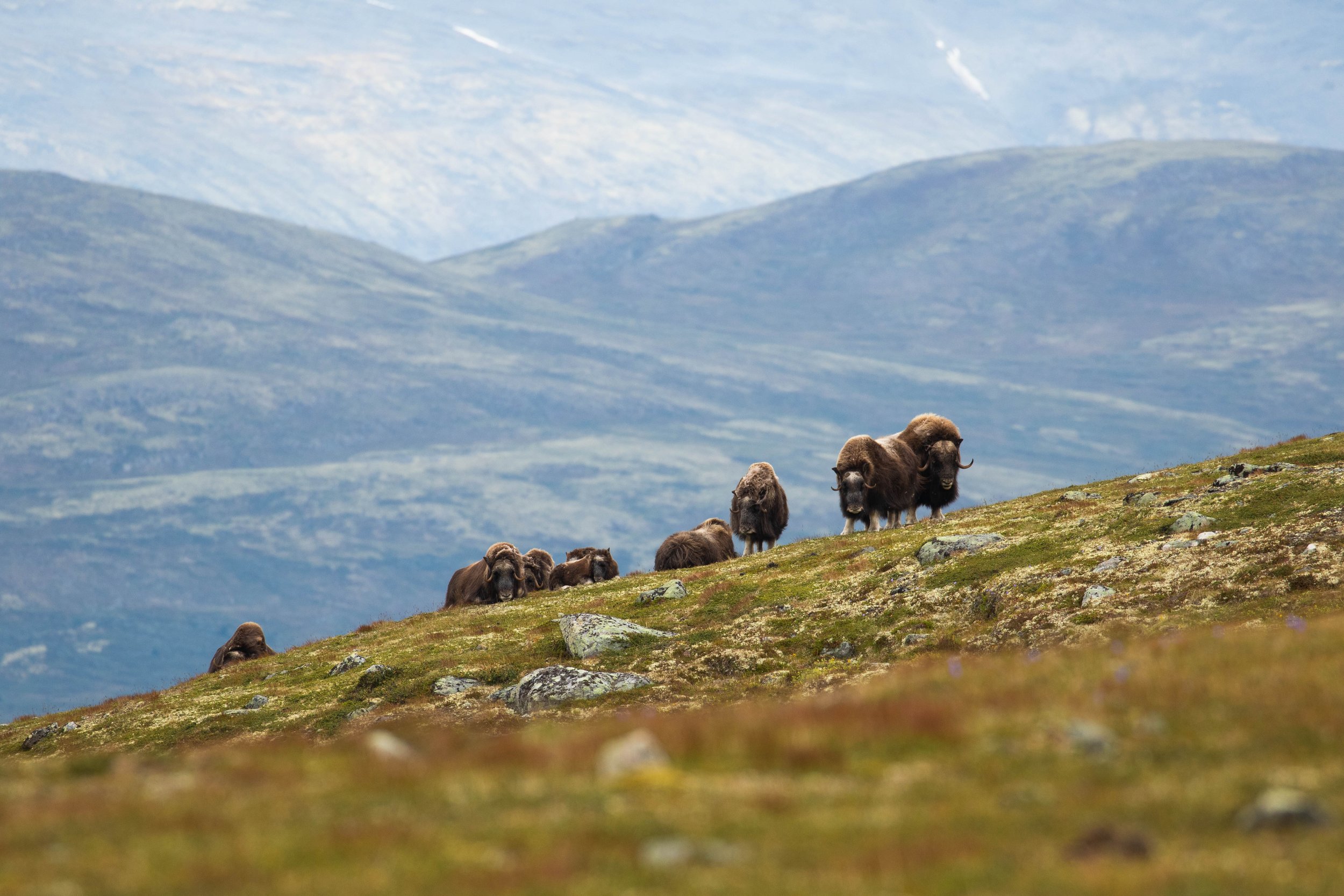Hello everyone! My name is Jakob Korban. I am 26 years old, born and raised in Dovre, and I have a bachelor’s degree in Wildlife Management. I am now taking over for Kim, and one of my biggest tasks is to continue developing the amazing work she has done. So far, I have already had several successful trips under my belt, and I want to thank the guests so far for their trust, good spirits, and wonderful moments in the mountains. Looking forward to many more!
Goodbye for now!
This post is gonna be a little bit different...
After 3 years at Dovre & Lesja Aktiv, and 5,5 years as a guide, I am leaving the company to pursue other adventures. I therefore want to take this opportunity to publicly thank those who have made my time here so memorable.
I want to thank our local partners, who work very hard every day to put the Dovrefjell area on the map, and give our guests the best experience possible. But also our partners far away - although I only know most of you through e-mail communication, you have often made my job a lot easier.
Our guests, with whom I got to create timeless memories. The thing I’m definitely gonna miss the most is your gratitude after a successful safari. I’m thankful for all the standing invitations, from visiting the United States to skiing in the Alps and tasting beer in Belgium. I even made life-long friendships along the way, and for that I’m forever thankful.
I personally also need to thank the other guides out there (yes, our competitors) for giving me tips on where to find muskox, and thereby reducing my stress levels significantly. It is always a pleasure meeting you in the mountains.
My colleagues: Ove Marius, Jonas, Einar, Jo Even, Ane Malene and Heidi. Thank you for your hard work, your knowledge, your humor and smiles. It has truly been great working with all of you.
And last, but most definitely not least, I want to thank Øyvind & Rune, the owners of Dovre & Lesja Aktiv. You started this company in 2019 with a vision, and in 2022 you had the courage to take a big step and hire me on a full-time basis. This was without doubt a big investment, an investment we thankfully see has paid off. We might not always have agreed on everything, but our team effort has made Dovre & Lesja Aktiv the success it is today. Thank you for giving me this opportunity and for your encouraging words when I needed them. You believed in me, and for that I’m ever grateful.
But after 5,5 years of working as a guide, I felt it was time to start some new adventures. Among other things, I’m excited to start working on the farm with my soon-to-be husband and his (soon-to-be our) cows. So, I’ll continue working with animals, just this time with animals you can actually pet.
Rest assured; we have found a competent successor: Jakob from Dovre. In other words, an authentic Norwegian local with lots of knowledge, who will introduce himself here soon.
Takk for meg!
- Kim
We received our Eco-Lighthouse certification!
Exactly one year ago Dovre & Lesja Aktiv started the journey to become Eco-Lighthouse certified - in Norwegian called “Miljøfyrtårn”.
Through this certification, we have committed ourselves to working systematically to improve ourselves regarding sustainability. This includes the climate and environment, but also social conditions.
Through our work with environmental certification, we hope to make it easier for our guests to choose sustainable experiences, as well as inspire our partners and competitors to focus on sustainability.
We also want to thank our advisor Stein from Skåppå, who, with his experience in eco-tourism, offered great help along the way.
It has at times been challenging - as it should be - and we still have a long way to go. But we are very excited to continue our journey and make more responsible decisions in the years to come.
Read more about our work on sustainability here.
Thanks for a fantastic 2024!
As 2024 is coming to an end, it is time for some reminiscing!
With the very rainy “summer” of 2023 still fresh in mind, we were a bit sceptical going into the summer season. Luckily, 2024 had much better weather in store for us, with a lot less rain. I’m not saying we didn’t have any rain - this is Norway, after all - but we could hike in shorts and t-shirts a lot more often.
However, good weather also has another effect. During warm periods, muskox tend to go higher up and deeper into the mountans. This means longer hikes, and we’ve definitely had some challenging days!
After summer comes autumn, and in autumn is muskox mating time - the higlight of the season! We were lucky enough to see mating and fighting, and else just a lot of flirting. ;)
A little muskox family. <3 Can you spot the bull?
Although we have been a bit quite on here, that doesn’t mean we’ve been sitting still. After the busy summer season, we started working to become environmentally certified through “Eco-Lighthouse” (Miljøfyrtårn). It is a lot of work, but definitely worth it! In January, we’ll know if we get the certification - we’ll keep you updated!
We are now well into the winter season, although it took some time before we got some “proper” snow. We’ll see how much snow we’ll have at the end of December, when we have mutliple muskox safaris planned (still available spots byt the way!).
From our latest muskox safari a week ago. These beautiful bulls gave a bit of a show!
We want to thank everyone who helped make 2024 such a great year. First, our guests. We strive to give you the best experience, but our best experiences are almost entirely thanks to you. Your interesting questions, sharing of knowledge, and even friendships made along the way - thank you!
Second, our partners. They help spread the word about the beautiful Dovrefjell, muskox and moose, and we are very grateful for that.
And last but definitely not least, our guides. This year we had our “veterans” Ove Marius and Jonas, and also newcomer Einar. We hope to see you again next summer, because your knowledge, enthusiasm and patience made this summer just awesome - we are quite frankly nothing without you. <3 I’m gonna stop there, before I get too sentimental. ;)
MERRY CHRISTMAS & A HAPPY NEW YEAR!
- Kim
ISSUES WITH BOOKING - CONTACT US
We are unfortunately facing issues with our booking system. If you try to book and get the message it is sold out, please contact us and we will help you further.
post@moskus-safari.no
+47 902 05 755
Recap winter 2023/2024
Spring is finally here, so it’s time to recap the winter season!
At the moment, there is still snow in the mountains, but the days are longer, the sun is shining and the first migratory birds have arrived. 😎
We look back at a cold but great winter. While the rest of Europe broke yet another record for being warm, this was not the case here in Norway. The coldest I had at my house was -35°, and our neighbor actually documented -40° (!). Luckily, the coldest safaris were “just” around -20°. 😉 And the guests handled it really well!
We had over 30 muskox safaris, so here are some of the highlights.
The first day with -20°. We were very lucky, it was just a 1 km hike. On the same day we also spotted wild reindeer in the distance, which is always a great sight!
It took me some time, but I finally managed to capture the most popular motive in Dovrefjell. MUSKOX & SNØHETTA! 💙
What 20 m/second wind can look and sound like. Here we were on our way back, downhill and with te wind behind us. You can imagine how we struggled uphill with the wind against!
The cold is not the only challenge in the winter mountains; the wind can be really gnarly too. There was one day in March where we had 20+ m/s wind. Sometimes, with those conditions you can experience whiteout; everything is just white and it is difficult to orientate. Thankfully, this was not the case that day, but I’ll admit I was thinking of calling it quits and turning around multiple times. However, the group handled it so well, I decided to continue. Unfortunately, the muskox had moved away and we were not able to see them up close. But as some of the guests said, being out in such extreme weather conditions is an experience in itself!
When your partially blind and deaf dog starts barking at something outside in the dark, you know something is up.
Moose
And I can’t forgot the moose of course! When working office from home, I’m often lucky to see them from my living room, so the binoculars are always closeby. However, one day I didn’t even need them - there were two just 40 m from the house!
The best moose safari was without doubt on December 31. I had the pleasure of guiding the guests on muskox safari earlier that year, so it was fun seeing them again. We ended up spotting around 24 moose! (After 20 moose, you easily loose track of counting. 😉) What a way to end the year!
But my absolute highlight this winter was this gorgeous bull. I first photographed him on 28.12.23.
Then, I spotted some moose on 18.02.24, and was excited as most moose will have lost both their antlers by then. But not his one! When I got home and looked at the pictures, he looked suspiciously familiar… It was the same moose!
But it doesn’t stop there. Just two days later, my father in law found a pair of antlers. I was super excited, because often, you find them during spring, and only one… But this was a pair, and they were fresh!
And upon further inspection, it was from the same moose! 🤩🤩 For sure an absolute highlight!
Now, we area busy preparing for the summer season. And with temperatures up to 20° these days, it really starts to feel like summer. 😎
- Kim
No muskox safari in May - but we have an alternative!
We are receiving many requests about muskox safari in May. And although May is a beautiful time, we don’t offer muskox safari during that month. The reason is that in May, the calves of both muskox and reindeer are born. This is of course a vulnerable time for them, and therefore there are restrictions for guiding in the national park.
Instead, we offer an alternative! A guided hike on “Vårstigen”, or “Spring path”. This path goes just outside the national park, and has been used for hundreds of years. Back then, this path was feared by travellers. Later, it got very popular among botanists, because of the special flora in this area - there are even numerous endemic alpine plants! Nowadays, “Vårstigen” is a populair trail for hikers and pilgrims.
And last but not least: you might be able to spot newborn (read: supercute) muskox! And if you do, it will guaranteed be a memory for life. Sure, it will be from a long distance, but how close to a newborn animal and its mother (who has a very strong mother instinct, sharp horns, and can run 60 km/h) do you really want to come?
We in Dovre & Lesja Aktiv have of course had many, many encounters with muskox. But believe it or not, seeing the new born muskox playing in the forest is definitely in the top 5!
Bird watching safari
We also offer bird watching safari. This safari is by car, so suitable for everyone! And if you’re lucky, you might even spot some moose too.
Tips
If you decide to go for a hike in Dovrefjell yourself, please do so with caution. Here are some tips!
Keep distance! For muskox, the safety distance is 200 m. They might seem unafraid or even tame, but this is not the case. Unlike most other widlife, muskox defend themselves rather than running away, and can attack if provoked. Muskox can weigh over 400 kg and run 60 (!) km per hour - and it goes without saying you can’t.
For reindeer, the situation is opposite. They are afraid of people, and get easily stressed when they notice us - which can be from long distances. You should not approach them, and the recommended distance to keep is min 1 km. That being said, spotting reindeer is an incredible experience, so if you do see them (from a distance), enjoy!
To avoid suprises, you should make yourself known to the muskox - don’t sneak up on them. If you meet a herd of muskox, pay attention to the entire herd, as they can be quite spread out.
If you’ve never seen a muskox before, it might be difficult to understand their behavior. When they paw the ground, throw their head back, snort or starts fighting with other muskox, it is their way of telling you they are not okay with the situation. In that case, calmy return the same way you came in.
You can read more about the muskox, reindeer and national park on the website of the national park.
Updated reservation policy
These last two years, we’ve been happy to see an increase in the number of people who choose to join our activities. And although we believe flexibility is very important and aspire to facilitate the wishes of our guests and partners, this increase in demand has made it necessary for us to update our reservation policy.
Some of the new points include:
For all bookings, it applies that, with regard to safety, at least 1 person in the traveling party must know sufficient Norwegian or English.
We expect our guests and partners to adhere to the regulations applicable at all times within the protected areas; including the use of drones, cycling and organized activities. A complete overview of these regulations can be found on the website of the national parks.
Cancellation of public activities up to 48 hours before the activity's start time results in a full refund, plus a cancellation fee of NOK 50 per person.
In the period 1 June - 15 October, as well as during Norway's Christmas, winter and Easter holidays, payment for safaris with a private guide must be received no later than 2 weeks (14 days) before the actual activity date. If we have not received payment within this deadline, you risk having your booking cancelled.
Cancellation up to 2 weeks (14 days) before the start time of the activity results in a full refund, plus a cancellation fee of NOK 250.
Cancellation between 7-13 days before the activity's start time results in a 50% refund.
Cancellation less than 7 days before will be charged in full.
Our reservation policy can be found here: https://www.dovrelesja.no/contact-us
-The Team of Dovre & Lesja Aktiv

